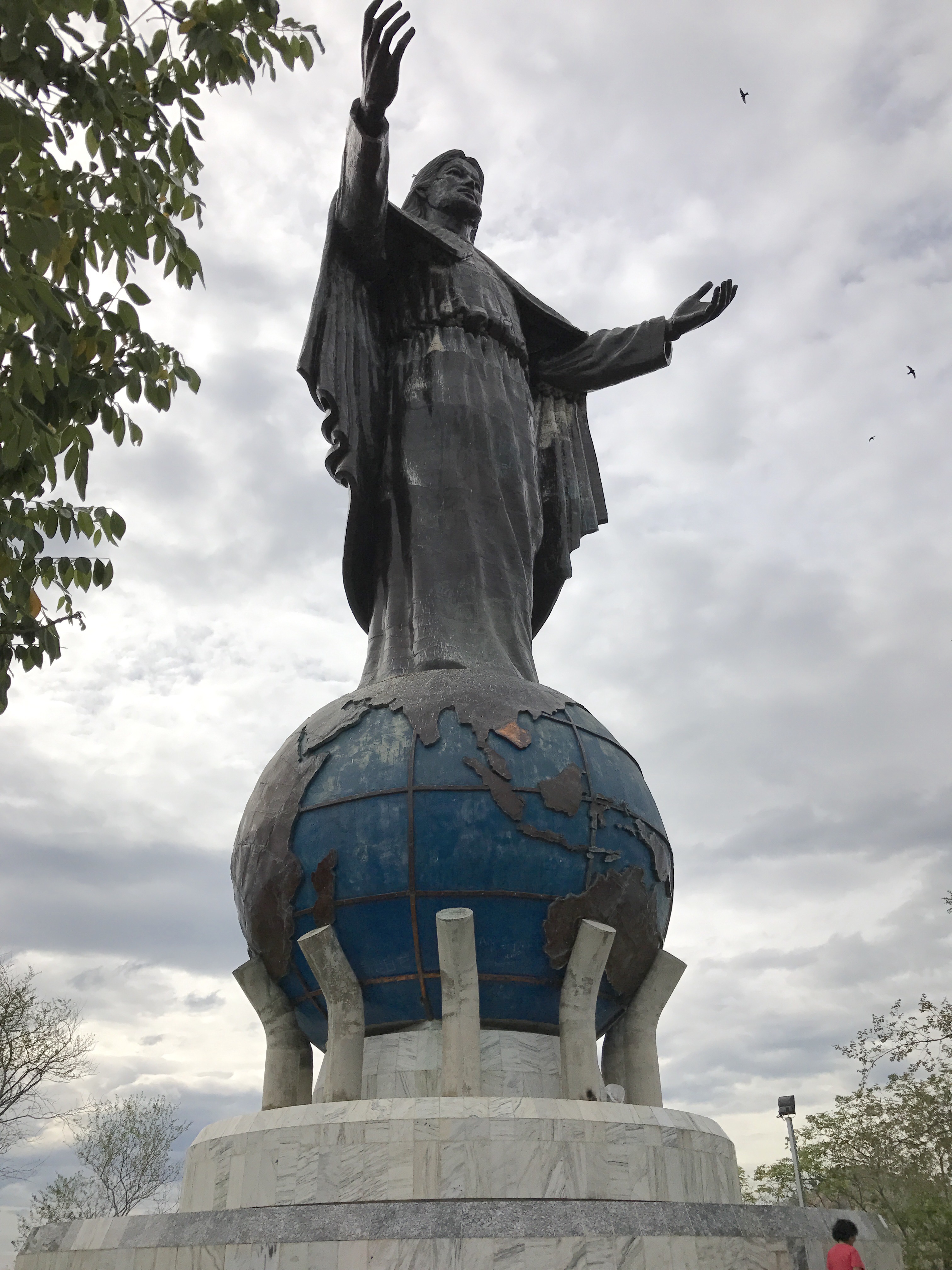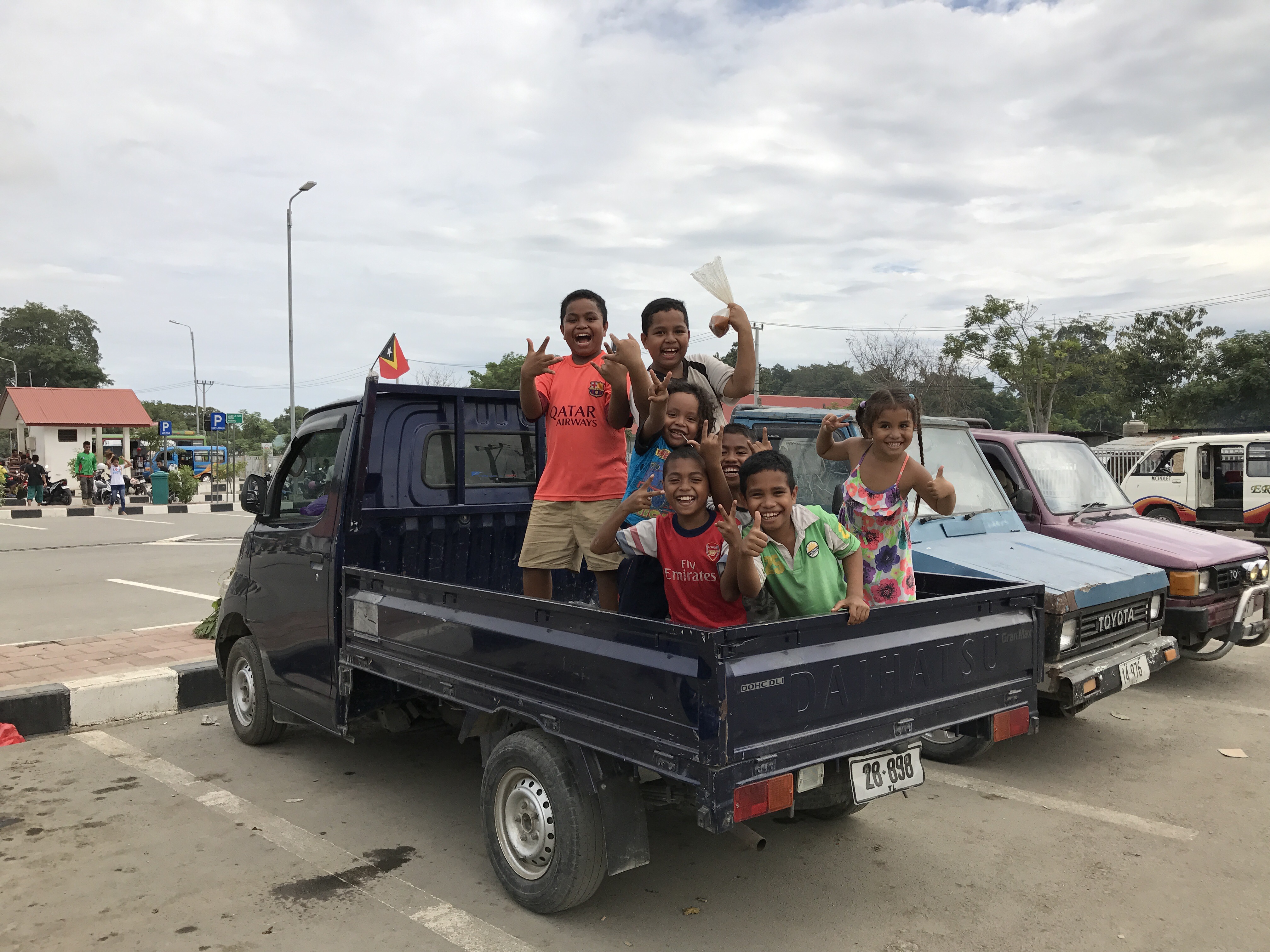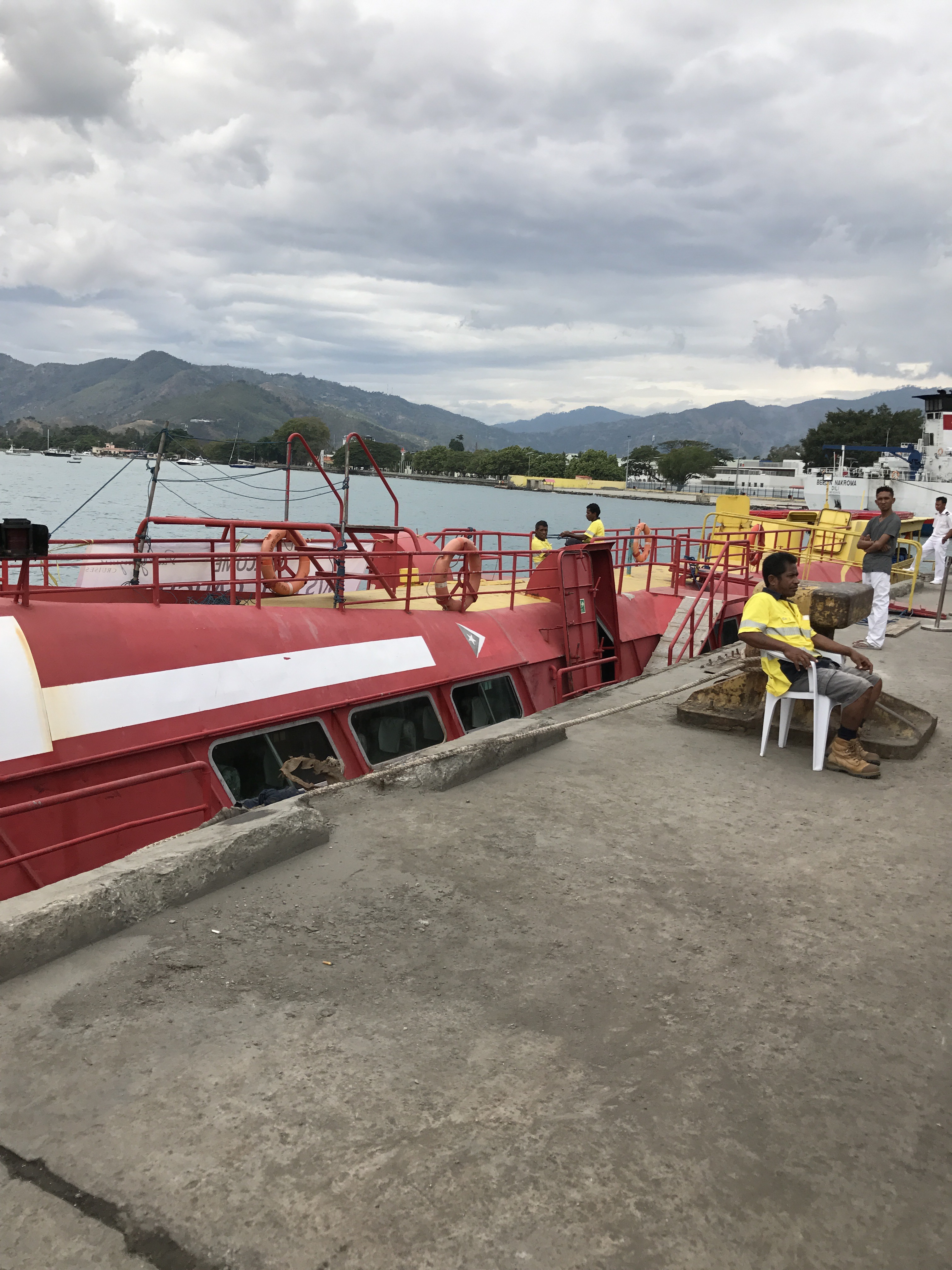We arrived early morning in Dili the capital of Timor-Leste, one of the world’s newest country. Timor-Leste suffered thousands of casualties during several guerrilla wars and pro-independence wars from Indonesia. Unlike other islands in Indonesia where Islam or Hindu is the religion of the masses, Timor-Leste is predominantly Roman Catholic.
 It’s still hot and humid as with all our other ports. However, unlike our other ports so far, the dock had much to be desired and the cruise ship cruise excursion manager had warned us all to be very careful embarking and disembarking. She wasn’t exaggerating! Once the tender had docked along side of this quasi-submarine type boat, we had to make our way up this steep steel plank gangway that came to rest on top of the sub-boat which we then walked across to actually set foot on the pier.
It’s still hot and humid as with all our other ports. However, unlike our other ports so far, the dock had much to be desired and the cruise ship cruise excursion manager had warned us all to be very careful embarking and disembarking. She wasn’t exaggerating! Once the tender had docked along side of this quasi-submarine type boat, we had to make our way up this steep steel plank gangway that came to rest on top of the sub-boat which we then walked across to actually set foot on the pier.
Our arrival though was pleasantly met with song and dance by the locals in full indigenous costume seemingly grateful and friendly that tourists were coming to visit their country.

We later learned that they are very proud and happy to show us how they are trying to build their new country.
Our guides were teenagers from a local school, some on their very first tour. They nervously giggled as they explained some of the sights we were about to see.
Our first stop is at the end of a peninsula where after walking up 500 plus steps commemorating Jesus Christ journey to the cross along the way, you arrive at the 27 metre (88.6 feet) statue of Cristo Rei (Jesus Christ), the town’s landmark.

A gift from the Indonesian government during the occupation of EastTimor. It was a good workout burning ship’s calories after walking up the steps in almost 30 Celsius temperature! A good vista though waited at the top. Birds were making lots of nests within the statue uncaring of its sanctity.
After working our way down back to the bus, we headed off to a vegetable market where locals do their Sunday shopping. We didn’t expect the throng of people nor the bounty of food available for purchase.

Though we were possibly the only foreigners that they had seen in a while, they paid us no mind as we walked up and down the aisles taking photos of their stalls and produce.
Some of our passenger friends decided to buy betel nuts to try which are known to be a stimulant. They are strung together almost like a shisk kabob.

They are banned in many countries as they carcinogenic and have a multitude of other bad side effects. After trying to chew them like tobacco, our friend reported a burning mouth sensation so he promptly chucked them out!
Returning to our bus, we came across young children in a pickup truck who were only happy to pose and have their photo taken.

Off again, to visit the Pope John Paul II statue. In 1989, Pope John Paul II came to Timor-Leste and brought the world’s attention to the plight of its residents. The grateful East Timorese erected a large statue of the Pope on another peninsula facing the Cristo Rei one to commemorate his visit.
Timor-Leste had some beautiful beaches but sadly its infrastructure is still in its infancy and will struggle for many years to attract the large tourist crowds from cruise ships and tour operators.

People still live in poverty and though it exports some oil and gas, that will dwindle in the next years to come leaving only coffee as its main export.
As we finished our tour, we took several photos with the tour guides who seemed so happy to be asked and kept coming back to us to talk and prolong the connection as we waited for our tender to return to take us back to the ship.
Hopefully, people like our young guides will help make a difference in the years to come and help put Timor-Leste on the tourism map.



Recent Comments